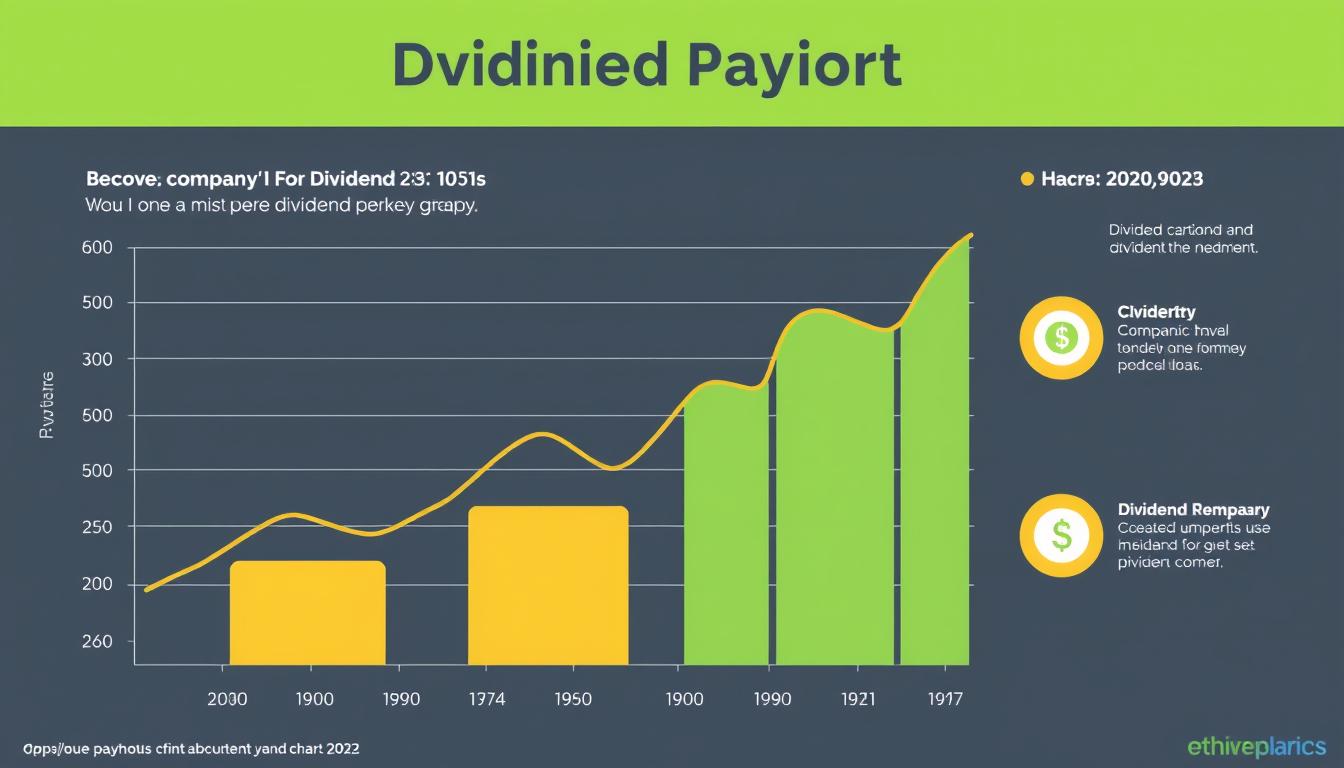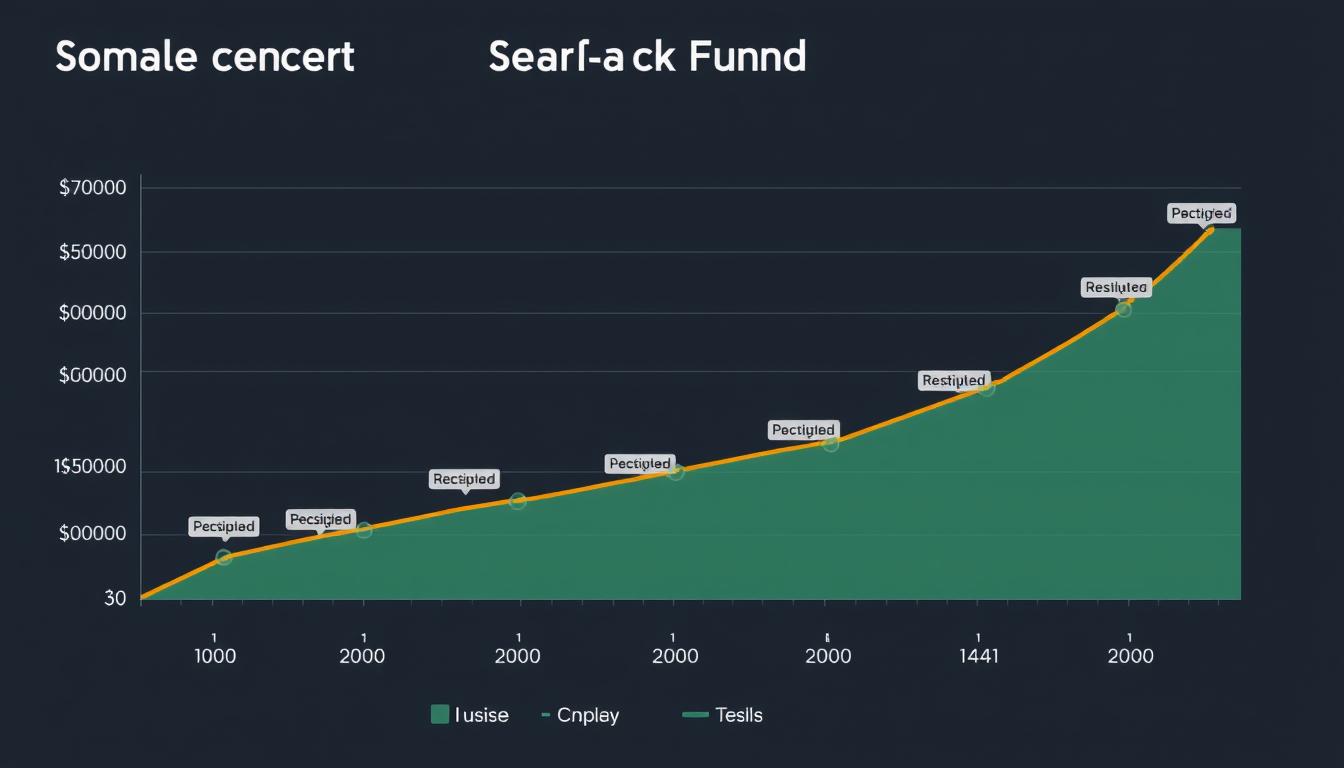Are you wondering if you're truly prepared for the financial challenges that lie ahead? In an ever-changing economic landscape, securing your financial future has never been more crucial.
Investing can be a powerful tool in achieving financial stability, providing an additional income stream, funding retirement, or simply generating good returns on your money.

With market volatility on the rise, it's essential to focus on investments that can withstand economic uncertainty. By making informed decisions and adopting a diversified investment strategy, you can better navigate the highs and lows of the market.
Key Takeaways
- Understand the importance of early investing for long-term financial security.
- Learn about the current investment landscape and top-performing investment vehicles.
- Discover practical steps to start investing, regardless of your financial knowledge.
- Explore various investment options, from low-risk to higher-risk opportunities.
- Create a diversified investment strategy tailored to your financial goals and risk tolerance.
Why Smart Investing Matters for Your Financial Future
To build a robust financial foundation, understanding smart investing is essential. Smart investing isn't just about picking the right stocks or timing the market; it's about creating a strategy that aligns with your financial goals and helps you achieve them over time.

The Power of Starting Early
Starting your investing journey early can significantly impact your financial future. The Rule of 72 provides a simple way to understand this: divide 72 by your interest rate to find out how many years it will take for your money to double. For instance, at a 6% return, your investment doubles in 12 years. This demonstrates the power of compound returns over time.
Even modest investments can grow substantially when given enough time. For example, investing $1,000 at a 6% annual return will yield $1,790.85 in 10 years, showcasing the mathematical advantage of early investing.
Setting Clear Financial Goals
Setting SMART (Specific, Measurable, Achievable, Relevant, Time-bound) financial goals is crucial for guiding your investment decisions. Different life stages require different investment approaches, and aligning your strategy with short-term, medium-term, and long-term goals is key.
| Investment Goal | Time Frame | Investment Approach |
|---|---|---|
| Short-term | Less than 3 years | Liquid, low-risk investments |
| Medium-term | 3-10 years | Balanced portfolio |
| Long-term | More than 10 years | Growth-oriented investments |
Consistency in investing often outperforms attempts at market timing. By creating a personal investment roadmap that connects your current financial situation with your future aspirations, you can make your goals more achievable through strategic investing.
"The biggest investment you can make is an investment in yourself. The more you learn, the more you'll earn." - Warren Buffett
Understanding the Investment Landscape in 2025
The year 2025 presents a unique investment landscape, with various opportunities and challenges arising from the current economic climate. As investors navigate this complex terrain, it's essential to understand the factors shaping the market today.
Economic Trends Impacting Investments
Current economic trends, including interest rate fluctuations and inflation concerns, significantly affect investment decisions. Recent global events and economic policies have created a dynamic environment where investors must be vigilant. For instance, changes in interest rates can influence the attractiveness of various investment vehicles, from bonds to stocks.

The global market conditions are also a critical factor, as they can impact the performance of different asset classes. Investors need to stay informed about these trends to make educated decisions about their portfolio.
Balancing Risk and Return
A fundamental principle of investing is the trade-off between risk and potential return. Generally, investments with higher potential returns come with greater risk. Understanding this balance is crucial for investors to align their investment choices with their financial goals and risk tolerance.
As Warren Buffett once said, "Price is what you pay. Value is what you get." This quote underscores the importance of assessing the intrinsic value of an investment, rather than just its current price, to make informed decisions.
Diversification is a key strategy for managing risk. By spreading investments across different asset classes, investors can reduce their exposure to any one particular market fluctuation, thereby protecting their portfolio and potentially enhancing long-term returns.
To achieve a balanced portfolio, investors should consider their financial situation, time horizon, and personal temperament. This holistic approach enables them to make investment decisions that are aligned with their overall financial objectives.
Retirement Accounts: Your Foundation for Future-Proof Finances
Building a secure financial future begins with a solid foundation, and retirement accounts are the cornerstone of this foundation. When planning for retirement, it's essential to understand the various account options available and how they can benefit your long-term financial strategy.

Traditional and Roth 401(k) Options
One of the primary decisions you'll need to make when selecting a retirement account is whether to opt for a Traditional or Roth 401(k). Traditional 401(k) plans allow you to contribute pre-tax dollars, reducing your taxable income for the year, and many employers match contributions, providing "free money" for your retirement. On the other hand, Roth 401(k) plans require you to contribute after-tax dollars, but the withdrawals are tax-free in retirement.
Understanding the tax implications of each can help you decide which is better suited to your financial situation and goals.
IRA Strategies for Long-Term Growth
Individual Retirement Accounts (IRAs) offer another avenue for retirement savings. Traditional IRAs provide tax-deductible contributions, while Roth IRAs offer tax-free growth and withdrawals. Additionally, self-employed individuals can benefit from SEP and SIMPLE IRAs, which have different contribution limits and rules.
By diversifying your retirement savings across different account types, you can create a robust strategy that supports your long-term financial goals.
Maximizing your retirement account contributions, even on a tight budget, involves understanding the contribution limits for the year and taking advantage of catch-up contributions if you're over 50. Allocating your investments within these accounts based on your age, retirement timeline, and risk tolerance is also crucial for long-term growth.
Safe Havens: Low-Risk Investment Options
In uncertain economic times, having a safe haven for your money is more important than ever. Low-risk investment options can serve as the foundation of a conservative portfolio or as a temporary home for funds you may need in the near future. These investments are designed to protect your principal while still providing some return.
High-Yield Savings Accounts

High-yield savings accounts are an attractive option for those looking for low-risk investments. They offer higher interest rates than traditional savings accounts, and because they're typically offered by online banks, they maintain FDIC insurance protection. This means your money is both accessible and insured.
Certificates of Deposit (CDs) and CD Ladders

Certificates of Deposit (CDs) are time deposits offered by banks with a fixed interest rate and maturity date. They tend to be low-risk and provide a slightly higher interest rate than traditional savings accounts. By creating a CD ladder, you can stagger the maturity dates of your CDs, allowing you to access your money at regular intervals while still benefiting from higher long-term rates.
Treasury Bills and Bonds

Treasury securities, including bills, notes, and bonds, are backed by the full faith and credit of the U.S. government, making them virtually risk-free. They offer a fixed return over a specified period, ranging from a few weeks to 30 years. This makes them an excellent choice for investors seeking predictable income and low risk.
By incorporating these low-risk investment options into your portfolio, you can create a balanced investment strategy that protects your capital while still offering growth potential. Whether you're a conservative investor or just looking to diversify, these safe havens can provide peace of mind in uncertain economic times.
The Magic of Compound Interest
Imagine your money working for you, generating more wealth without any additional effort – that's the magic of compound interest. This powerful financial concept can multiply your savings over time, turning modest investments into substantial sums. Compound interest is essentially the interest on a loan or deposit calculated based on both the initial principal and the accumulated interest from previous periods.
Building Wealth Over Time
To understand how compound interest builds wealth, consider this example: A $1,000 investment earning 8% annually generates $80 in the first year, making the total $1,080. In the second year, you earn 8% on $1,080, not just the initial $1,000, resulting in $86.40 of interest. This process continues, with the interest earned in each subsequent year being greater than the last, demonstrating how compound interest accelerates the growth of your money over time.
Let's look at another example to illustrate the power of compound interest over longer periods. If you were to invest $1,000 at an 8% annual interest rate, after 10 years, your investment would grow to approximately $2,158.28. The key factor here is time; the longer your money is invested, the more significant the impact of compound interest.
Strategies to Maximize Compound Growth
To maximize the benefits of compound interest, it's crucial to start investing early and be consistent. One effective way to do this is by making regular contributions to your investment accounts. Additionally, reinvesting dividends and avoiding early withdrawals can significantly enhance the compounding effect. The "Rule of 72" is a simple tool to estimate how long it will take for your investment to double at a given interest rate – just divide 72 by the annual interest rate.
For instance, at an 8% interest rate, your investment will double in approximately 9 years (72 / 8 = 9). Understanding and leveraging compound interest can be a way to achieve your long-term financial goals, making it an indispensable tool in your investment strategy.
Stock Market Investments for Steady Growth
For investors aiming for long-term growth, the stock market presents several attractive options. The stock market can be a powerful tool for building wealth over time, offering a range of investment choices tailored to different investor needs and risk tolerances.
Blue-Chip Stocks for Stability
Blue-chip stocks are shares in large, well-established companies known for their stability and reliability. These companies are typically industry leaders with a history of consistent performance. They are usually worth billions of dollars and have a track record of paying regular dividends to investors.

Dividend Stocks and Funds for Income
Dividend stocks offer a regular income stream, making them attractive to investors seeking predictable returns. These stocks are often from established companies with a history of paying consistent dividends. Dividend stocks can provide the fixed income of bonds as well as the growth potential of individual stocks and stock funds.

Small-Cap Stocks for Growth Potential
Small-cap stocks represent shares in smaller companies that have the potential for significant growth. While they can be riskier, a diversified portfolio of small-cap stocks can mitigate some of this risk. Investing in small-cap stock funds can be a strategic way to tap into this growth potential.

By understanding the different types of stock market investments available, investors can create a diversified portfolio that aligns with their financial goals and risk tolerance. Whether focusing on stability, income, or growth, the stock market offers a range of opportunities for steady growth.
Index Funds and ETFs: Simplified Diversification

Achieving broad market diversification is now within reach for all investors through the use of index funds and ETFs. These investment vehicles have revolutionized the way people invest by providing simple, low-cost ways to achieve broad market exposure with minimal effort.
S&P500 and Total Market Index Funds
S&P500 index funds track the performance of the S&P 500 Index, which comprises the stocks of 500 large-cap companies in the US. This provides investors with exposure to the US stock market's largest and most stable companies. On the other hand, total market index funds aim to replicate the performance of the entire US stock market, covering a wide range of companies across different sizes and sectors.
For example, the Vanguard 500 Index Fund is a popular S&P500 index fund that offers broad diversification and low fees.
Specialized ETFs for Targeted Exposure
While broad-based index funds provide a core investment, specialized ETFs allow investors to gain targeted exposure to specific sectors, themes, or investment strategies. These can include technology, healthcare, dividend stocks, or international markets. By combining broad-based index funds with specialized ETFs, investors can create a diversified portfolio tailored to their investment outlook and interests.
For instance, the Invesco QQQ ETF tracks the Nasdaq-100 Index, providing exposure to the technology-heavy Nasdaq stock market.
Real Estate Investment Options Without Buying Property

Diversifying your investment portfolio with real estate is now possible without the need for direct property ownership. This opens up new avenues for generating income and potentially significant investment returns.
REITs (Real Estate Investment Trusts)
One of the most attractive ways to invest in real estate is through REITs. These are publicly traded companies that own or finance real estate properties and provide a steady income stream through dividends.
REITs are required to distribute at least 90% of their taxable income to shareholders, making them an attractive option for those seeking regular income. They also offer diversification, as they can include a wide range of properties across different sectors.
Real Estate Crowdfunding Platforms
Another innovative way to invest in real estate is through crowdfunding platforms. These platforms allow multiple investors to pool their money to invest in specific projects or properties, reducing the barrier to entry for individual investors.
By investing through crowdfunding, you can participate in the real estate market with lower minimum investments compared to traditional property buying. It's essential to evaluate the platform's track record, the quality of the projects, and the potential for returns.
When evaluating real estate investment options, whether through REITs or crowdfunding, it's crucial to consider factors such as the management team's experience, the property's location, and the potential for long-term growth. By doing so, you can make informed decisions that align with your investment goals and risk tolerance.
Modern Investment Tools: Robo-Advisors and Apps

In the digital age, managing your investments has never been easier, thanks to the rise of robo-advisors and investment apps. These modern tools have democratized access to professional portfolio management, making it possible for anyone to start investing with minimal capital and expertise.
How Robo-Advisors Work
Robo-advisors use sophisticated algorithms to create and manage diversified investment portfolios based on your financial goals, risk tolerance, and time horizon. This automated approach ensures that your investments are continuously monitored and optimized, providing a hassle-free investing experience.
Comparing Popular Investment Platforms
Popular robo-advisor platforms like Betterment, Wealthfront, and Vanguard Digital Advisor offer a range of features and fee structures. For instance, Betterment charges 0.25% annually, while Wealthfront offers financial planning tools alongside its core robo-advisory service. When choosing a robo-advisor, consider factors such as management fees, account minimums, and the range of investment options.
Setting Up Your First Automated Investment
To start investing with a robo-advisor, you'll typically need to complete a questionnaire about your financial goals and risk tolerance. Once your account is set up, you can link your bank account and establish a regular contribution plan. Many platforms allow you to start with a relatively small amount of money, making it accessible to a wide range of people. By automating your investments, you can take advantage of dollar-cost averaging and potentially lower your emotional stress related to market volatility.
Creating Your Personalized Investment Strategy
Developing a personalized investment plan is the key to securing your financial future. To achieve this, it's crucial to align your investment portfolio with your specific financial goals, time horizon, and risk tolerance.
A well-structured plan involves asset allocation based on your age and investment timeline. For instance, younger investors may opt for a more aggressive portfolio, while those nearing retirement might prefer more conservative investments. Regular portfolio reviews and rebalancing are essential to maintain your target asset allocation as market conditions change.
To implement your strategy effectively, prioritize different investment vehicles for tax efficiency. Utilize retirement accounts and taxable accounts wisely to minimize tax liabilities. Starting small and staying consistent is more important than timing the market or waiting for the "perfect" moment to begin.
By following these guidelines and maintaining a long-term perspective, you can create a robust investment plan that helps you achieve your financial objectives. Remember, smart money decisions and patience are key to lasting results. Your future self will be grateful that you started investing today.